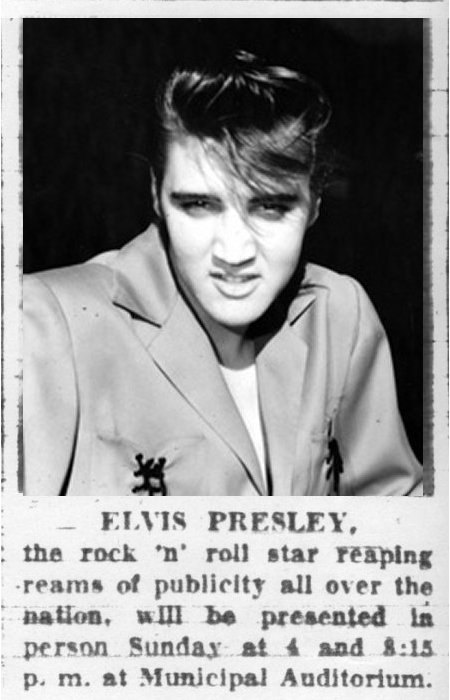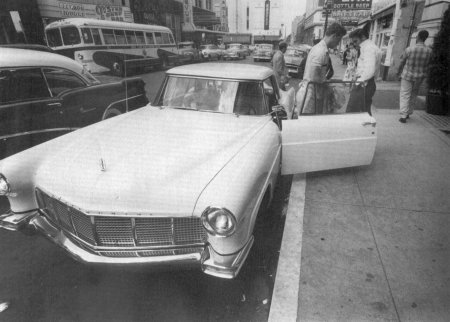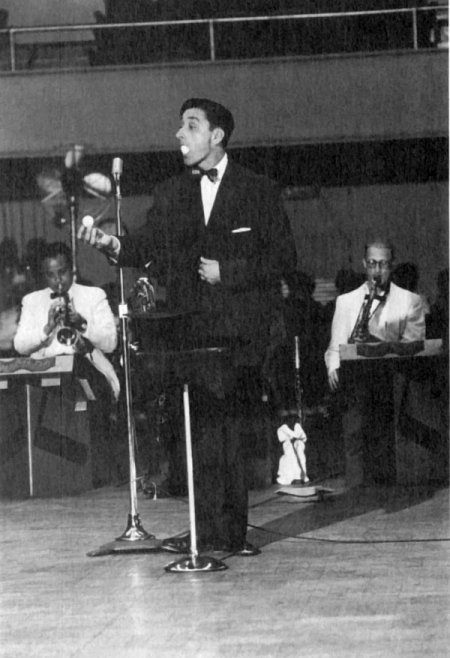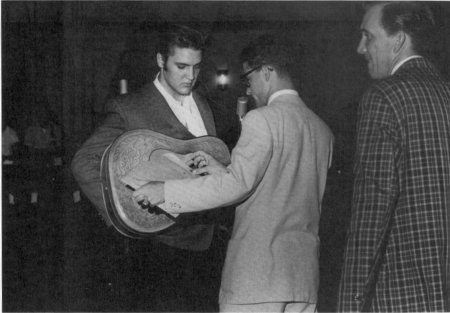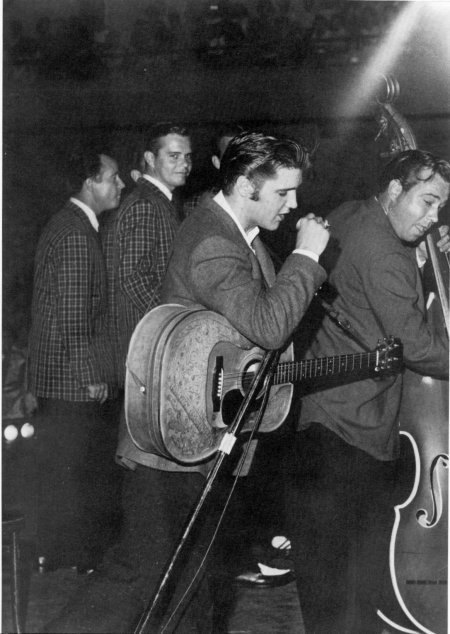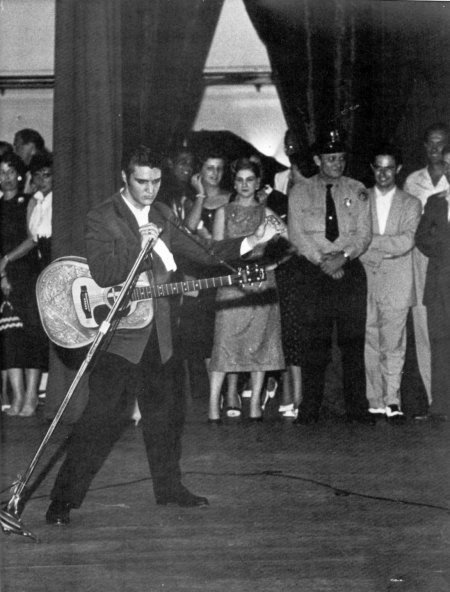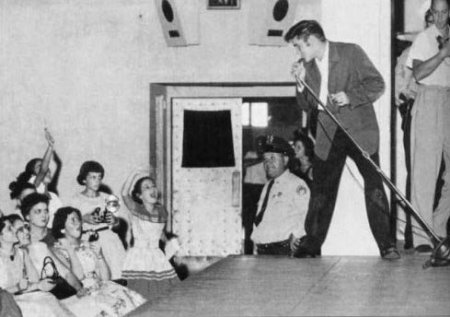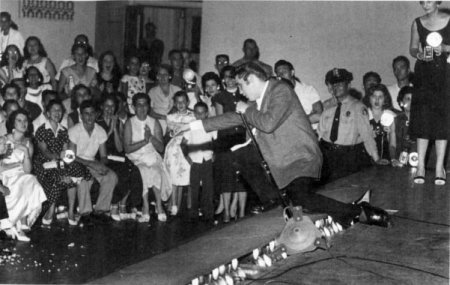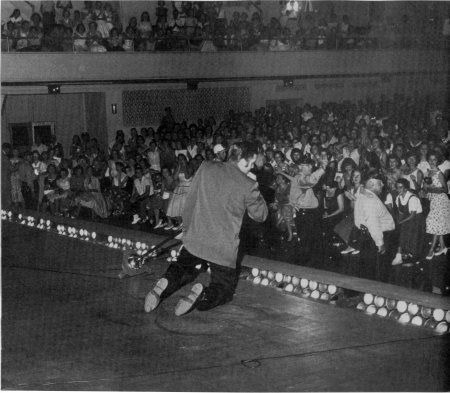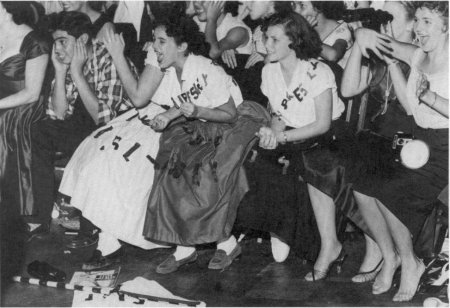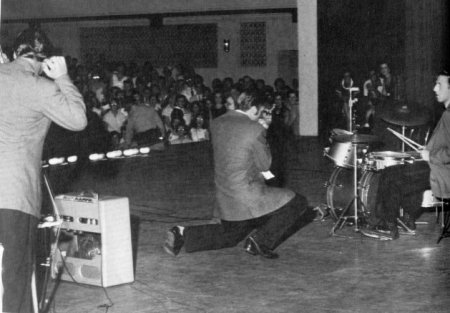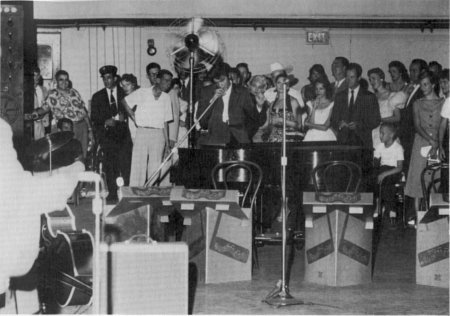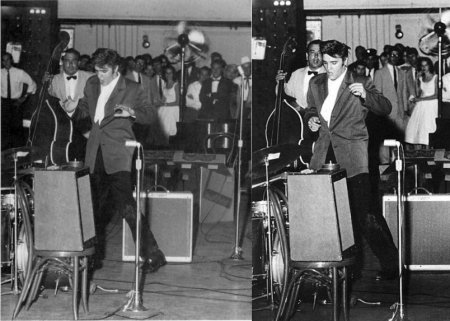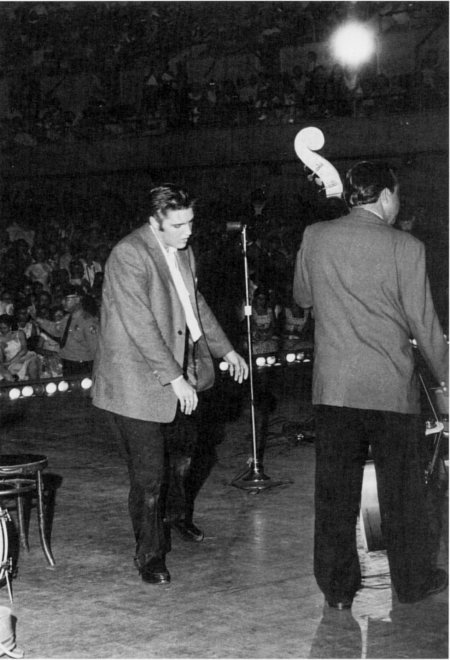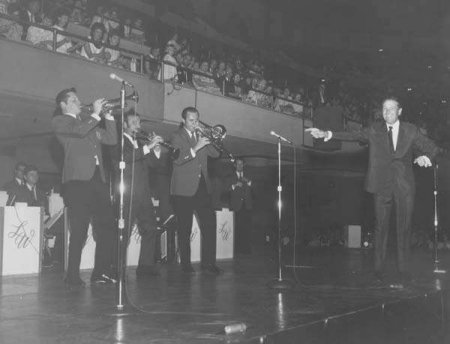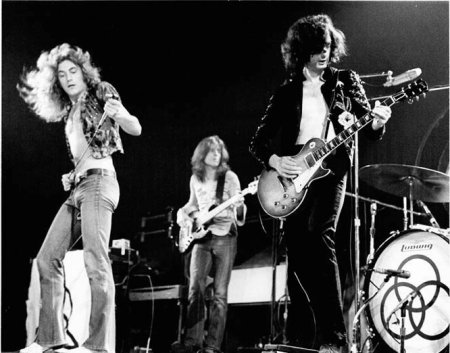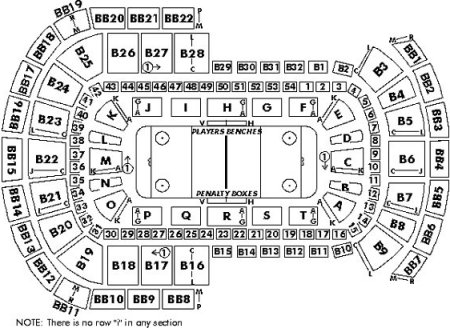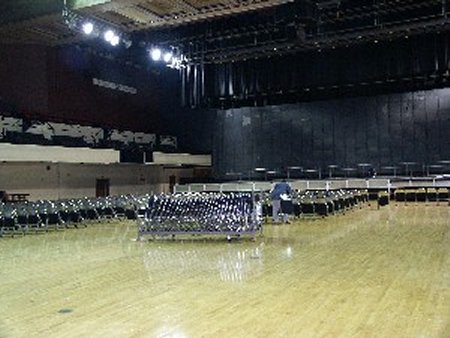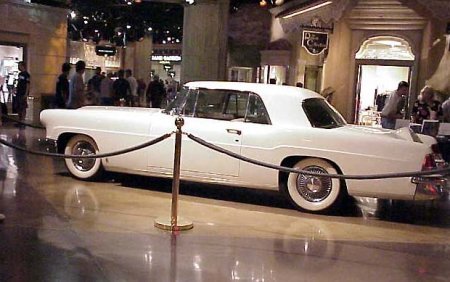 |
Municipal Auditorium
The Municipal Auditorium at 1201 St Peters Ave. in New Orleans, LA, adjacent to the French Quarter, opened in 1930. One of the reasons it was built, says John Magill, head of research at the Historic New Orleans Collections, was to replace the French Opera House, which burned to the ground in 1919. The auditorium was part of a planned municipal complex that was intended to fill much of what is now Louis Armstrong Park as well as extending along Basin Street. But when the Great Depression set in, plans for the rest of the project were scrapped.1
At the time it was considered one of the largest and most modern in this country with a total seating capacity of 10,000 that could be divided into two halls, one seating 6500 and the other 3500. It had fourteen other meeting rooms and 75,000 sq ft. of space for exhibit purposes. It has hosted many concerts and events, perhaps being best known as the site of many of the New Orleans Mardi Gras Krewe balls.
Krewes are the masking and parading clubs (or social organizations) for which New Orleans is both famous and infamous. Most Krewes developed from private social clubs that have restrictive membership policies. Today, in order to obtain a Parade Permit, all Orleans Parish Clubs must sign Affidavits agreeing not to discriminate in terms of membership, but many of the more established Krewes continue to allow membership by "invitation only."2
Peter Guralnick, in "Last Train To Memphis", wrote, the tour began on May 1 in New Orleans, the day after Elvis' fourth Sun single, "Baby, Let’s Play House," was released. It was billed as a three-week, twenty-city tour that would employ thirty-one different artists, some of whom would pick up and leave the tour at various points. Headliners were Hank Snow, Slim Whitman, the Carter Sisters with Mother Maybelle and Martha Carson. Faron Young would join the show in Florida. In a solution the Colonel devised to prevent the kind of thing that had happened on the last tour, there would be a first half of "younger talent" that included Jimmie Rodgers Snow, the Davis Sisters, and the Wilburn Brothers, with "one of the newest though most exciting personalities in the Hillbilly field . . . [whose] singing style is completely different from any other singer in the field," Elvis Presley, appearing just before the intermission. There were near-riots almost everywhere they played. Johnny Rivers saw the show in Baton Rouge and decided, “I wanna be like that guy," while in Mobile, Jimmie Rodgers Snow remembered Elvis being chased across a football field. There were girls in every city, and after the show Elvis never lacked for company, cruising around town in the pink and white Cadillac he had just acquired to replace the Lincoln (once again he had his name painted in black on the door). Jimmie Snow roomed with him on this tour.
It was on this tour that when Elvis was mobbed in Jacksonville, the Colonel was sold on Elvis' earning potential. According to Oscar Davis, wrote Guralnick, that marked the turning point -- that was the real eye opener, the Colonel said to him. By the time the show got to Richmond three days later, it was as if Elvis had never been anything but the Colonel's boy.
Their next (and last) appearance at Memorial Auditorium was on August 12, 1956, when Elvis, the band and entourage arrived in New Orleans from Jacksonville, FL for two shows. This was the last stop on a ten day tour that had started in Miami, which, aside from this one, consisted of dates entirely in Florida. Unlike their first appearance at the Auditorium which started their tours of Florida and the southeast, this would mark the end of appearances in that area, and touring on a regular basis for that matter.
As had often been the custom they traveled at night and slept by day. Traveling with Red West and cousins Gene and Junior Smith, Elvis arrived in the new Lincoln Continental Mark II that he had purchased in Miami at the start of this tour.
As had appeared on most of the shows on the tour, this show opened with performances by singers, Frankie Connors, Nancy Ford, The Jordanaires, and comic magician Phil Maraquin backed by the tour orchestra recruited by Al Dvorin in Chicago. When Elvis finally went onstage he was presented with "the key to the city" and a scroll of thousands of signatures from fans.
On the 13th, the day after the shows, the review in the Times Picayune went as follows:
Elvis Presley jerked his tortuous way across the stage of the Municipal Auditorium twice Sunday, "sang" eight or ten songs, thumped on a guitar, fell to the floor, knocked over microphones and set off a din of teenage squealing unparalleled since the heyday of Sinatra.3
At matinee and evening performances before nearly full houses on each occasion (the auditorium holds 10,000), Elvis the Pelvis started each show with a small tiny belch and on each occasion brought the house down. It was that kind of show.3
He sang all the songs that are now a mark of jukebox America. "Blues Suede Shoes" and "When My Baby Left Me" and "Heartbreak Hotel" and "Tutti Fruiti" and "I Want You, I Need You, I Love You" and a number of others equally deathless.3
To say that Elvis Presley sings is, on the strength of his New Orleans performance, giving him the benefit of doubt, for more often than not what passes for his voice is drowned out as often as it was audible. On the other hand he is not known for his voice. He is a personality, an entertainer who has made an incredible mark on a whole nation and in New Orleans he lived up to this latter role with all the vigor and aplomb of a veteran which he isn't.3
His auditorium audiences were, by and large, made up of girls from about 10 to 16 who came armed with flash cameras, autograph books, photographs of their hero and who behaved in a way that scarcely reflects credit on teen-age America. At the evening performance he contorted his body in such a manner as to cause whole platoons to rush to the edge of the stage. Girls of 10 and 12 lunged to touch him.3
When police started to move in, Elvis jerked his way back to the center of the stage and comparative safety of the trio which backs him up.3
He flings his limbs about and quivers in such a way as to make one think he might have a trick knee or hip, possibly from an old war injury. But this is not the case. This is just Elvis Presley. At each performance his appearance was preceded by singers, dancers and comedians, some of whom had talent far exceeding that of the star but none of whom who could touch the lad when it comes to showmanship.3
At each show he was onstage about 35 minutes, delivering the same songs that have become de rigeur for the nations disc jockeys. He was also presented with a key to the city and a scroll bearing more than 5000 signatures of youthful New Orleanians who would wish him luck and some who carried banners inscribed, "Elvis for President."3
Whether he'll be around as long as the Davy Crocket hat remains to be seen.3 According to Peter Guralnick and Ernst Jorgensen in "Elvis Day by Day", the Colonel had guaranteed Elvis $500 a performance or $2,000 a day, whichever was greater, and Elvis received a total of $20,000, plus a $7,500 commission on souvenir sales for the ten-day tour. The band however, received their "working" salary of $200 a week. After two long years on the road the days of constant touring were over. Ten days later Elvis would be in Hollywood to begin production on Love Me Tender, the first of four movies that he would make before entering the Army. They would only make ten more appearances in 1956 and perform shows on three short tours in 1957.
The Auditorium in New Orleans continued to offer major attractions through the 1950s and into the 1970s at least. In 1969 and 1970 it was home to the New Orleans Buccaneers one of the charter franchises of the American Basketball Association, founded in 1967. It was the city's first professional basketball team but the team was sold and moved to Memphis in 1970. During its inaugural 1974-1975 season the Auditorium was home to the New Orleans Jazz basketball team. They finished in last place that season with a 23-59 record and moved to the Louisiana Superdome the following season.
The venue hosted many of the major rock acts of the 60s, 70s and 80s. Led Zeppelin performed at the Municipal Auditorium in August of 1971 and May of 1973. They reputedly were said to have appeared there in 1975 (unconfirmed) on their American tour accompanying the release of their "Physical Graffiti" album and so did Rod Stewart and Ron Wood with Faces later that year. Bruce Springsteen and the E St. Band performed there in 1976 and 1978. The venue also was a casino before the new Harrah's New Orleans building on Canal Street was opened.
In the 90's, fueled by the desire to bring more profitable events to the facility, the city decided to renovate and transform the Auditorium into a multi-purpose arena and auditorium. The project involved building a regulation hockey rink inside the building flexible enough so that it could be converted back to an auditorium for other uses. The building was able to go from a hockey rink, to a concert hall, to a basketball court, to a Mardi Gras ball setting in a one-day turnaround.4
The Auditorium was renamed the Morris F.X. Jeff Sr. Municipal Auditorium, after a former executive in the New Orleans Recreation Department who had committed his life to improving conditions and opportunities for New Orleans children. Completed in October of 1997, the 200,000 square-foot building featured a 5,000-seat arena and was the new home of The New Orleans Brass, a minor league hockey team of the East Coast Hockey League (seating for stage events was 7,853).
The Brass, a one-time East Coast Hockey League affiliate of the NHL's San Jose Sharks, lasted only five seasons (1997-2002). The Brass averaged a home attendance of 4,300 (78-percent capacity) at the Municipal Auditorium during its first two seasons. The Brass moved to the New Orleans Arena for the 1999-2000 season, but the more cavernous confines of the New Orleans Arena made spectators feel further from the action.5
With the ECHL under pressure to release a 2002-03 schedule, the team suspended operations on July 18, 2002 as it struggled to hammer out a deal that would have designated Morris F.X. Jeff Sr. Municipal Auditorium once again as its home playing facility.5
In August of 2005 the auditorium suffered damage and associated flooding when Hurricane Katrina, one of the costliest and deadliest hurricanes to the hit the US, wreaked havoc along much of the north-central Gulf Coast. The storm flooded the basement and damaged the roof of the auditorium destroying all of it's mechanical and electrical systems located in the building's basement.1
Prior to and immediately after Katrina, the Municipal Auditorium was managed by SMG corporation, which also managed the adjacent Mahalia Jackson Theatre, the Superdome, the New Orleans Arena, the Pontchartrain Center and many other facilities nationwide. In January of 2006 the city produced a two-page list of capital improvements and preliminary estimates to restore the auditorium (at a minimum of $7.5 million). By July of 2006, beyond pumping out the flooded basement and removing soaked carpet and water-damaged debris - all paid for with FEMA funds and completed by early December 2005 - nothing much had happened. The city said that SMG's services were no longer necessary because the building was not being used and terminated its contract after March 31.1
According to a Recovery Projects Report published in June of 2008, there are no current plans underway to renovate the Auditorium. Aside from repairing the roof and exterior to seal the building from outside elements, repairs to the Auditorium are not high on the priority list to return it to working order. They have it listed as preliminary design stage phase, which is the fourth of nine phases. At present, attention is focused on the completion of the Mahalia Jackson Theatre for the Performing Arts, mostly because it is more of a multi-purpose performing arts facility and thus can be used by more organizations - ballet, symphony, opera, musical theatre. The Theater is scheduled to reopen in January, 2009. The Mayor's Office of Recovery Management is responsible for this information and recovery can be tracked at www.cityofno.com/recovery.6
In the 1960s, Leonard Bernstein was quoted as calling Elvis “the greatest cultural force in the twentieth century.” His popularity and that sentiment has prevailed and continues to grow still today. The Davy Crockett (or Coonskin ) hat referred to by the Times Picayune writer was made popular in large part by Disney's 1954 television show "Davy Crockett, Indian Fighter" and its sequels, starring Fess Parker. The hat went out of fashion by the end of the '50s. page added August 25, 2008 1955 Hank Snow All star Jamboree advertisement courtesy Ger Rijff's Long Lonely Highway. 1956 Times Picayune article courtesy New Orleans Public Library. 1
excerpt from "Stages
Left?" by Will Coviello for Best of New Orleans, July 4, 2006
The 1956 Lincoln Continental Mark II that Elvis bought in Miami at the beginning of his August 1956 tour remained in his possession for the rest of his life. It was sold by EPE at auction at the MGM Grand in Las Vegas in 1999 along with many other items from the Archives. It is now on display at Townsend's Classic & Antique Auto Collection in Shawnee, Oklahoma.
|
|
|
All photos on this site (that we didn't borrow) unless otherwise indicated are the property of either Scotty Moore or James V. Roy and unauthorized use or reproduction is prohibited. |
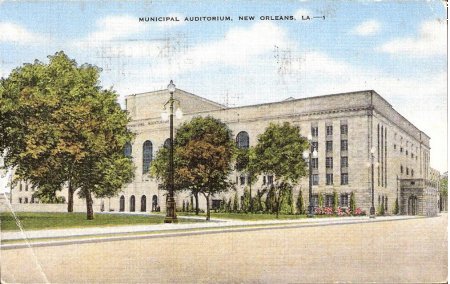
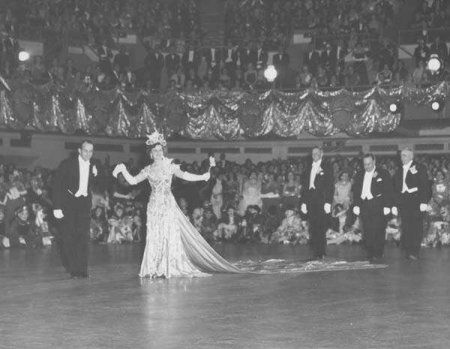
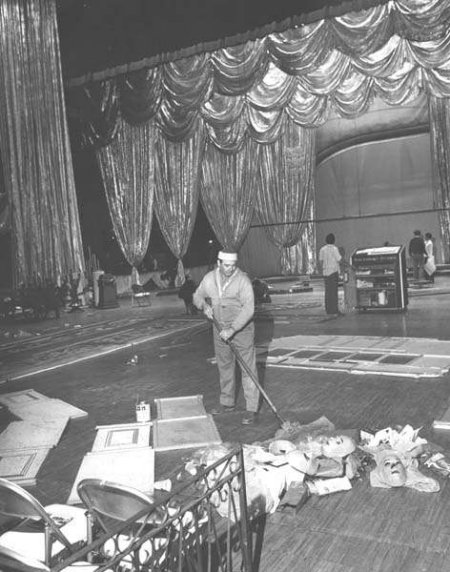
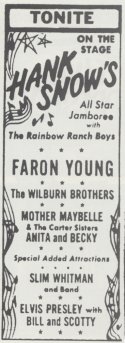 On May 1, 1955, Elvis, Scotty and Bill performed at the Municipal
Auditorium for the first time with three shows while on a new tour with Hank
Snow's All Star Jamboree. Having toured with them on dates since
February to an increasing popularity in the midsouth and West Texas
area, often to greater demand and much dismay of the headliners, this tour
would take them into new territory as they traveled to Florida and the
Southeast.
On May 1, 1955, Elvis, Scotty and Bill performed at the Municipal
Auditorium for the first time with three shows while on a new tour with Hank
Snow's All Star Jamboree. Having toured with them on dates since
February to an increasing popularity in the midsouth and West Texas
area, often to greater demand and much dismay of the headliners, this tour
would take them into new territory as they traveled to Florida and the
Southeast.
